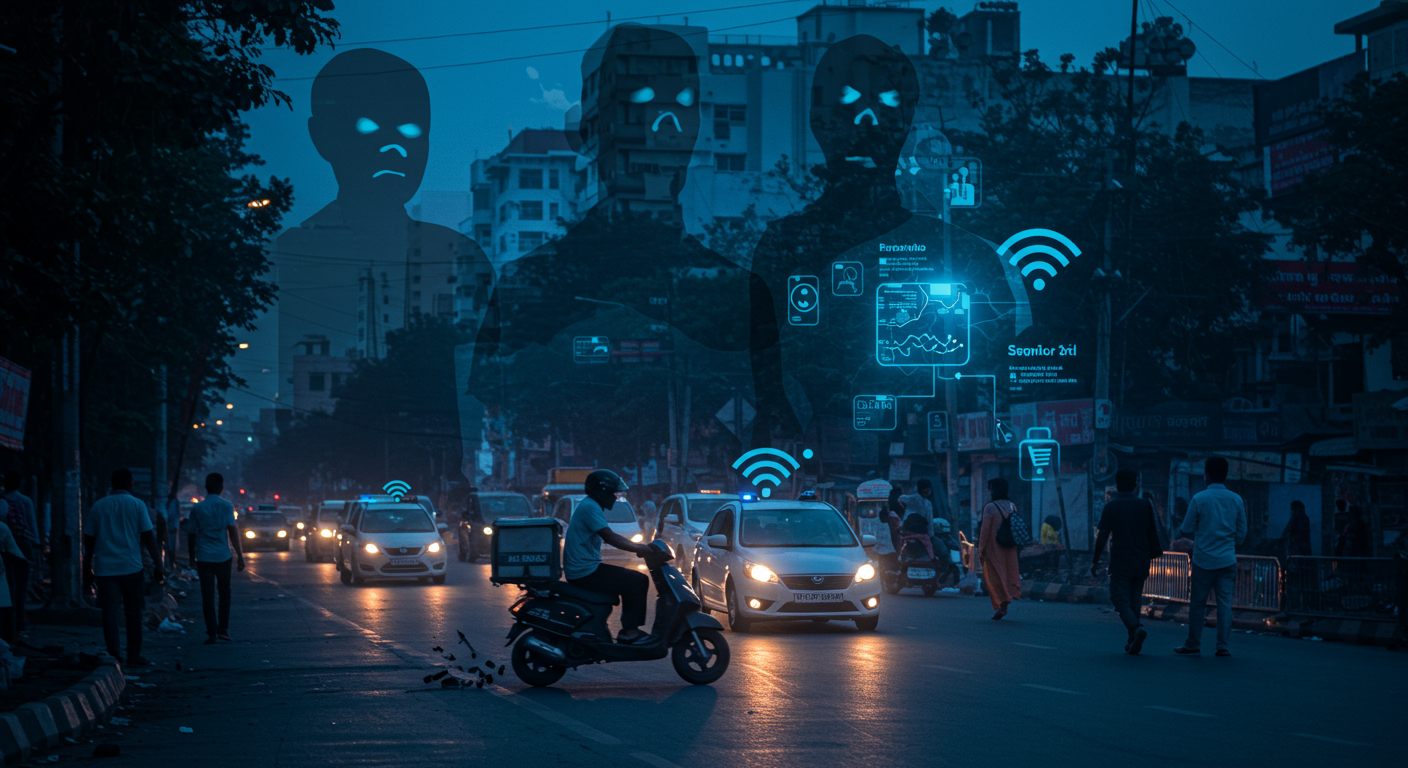
The recent news from Bengaluru, detailing how a minor road incident escalated into a tragic murder, has left me deeply disturbed. It speaks volumes about the boiling point of frustration and rage that seems to simmer just beneath the surface in our daily commutes Bengaluru horror: Delivery boy chased, crushed after road rage spat; martial arts trainer, wife arrested for murder. The victim, a young delivery agent named Darshan, lost his life over a scratched car mirror, allegedly at the hands of Manoj Kumar, a Kalaripayattu trainer, and his wife, Aarati Sharma, who reportedly chased and rammed their car into his scooter. Deputy Commissioner of Police (South), Lokesh Jagalasar (LinkedIn), has confirmed their arrest, but it cannot undo the loss.
This incident is a grim reminder of the vital discussions I've had about road safety and the role technology could play in preventing such senseless tragedies. I have long argued that human emotional responses, especially anger and impatience, are significant factors in road fatalities, and that a purely human-centric approach to road safety is insufficient.
The Urgency for Institutionalized Safety
Years ago, in my blog titled "Young: and dying on roads", I emphasized that while sensitizing drivers is important, there is an urgent need to "institutionalize" vehicles themselves with advanced sensors. These sensors could monitor crucial parameters from vehicle condition to driver alertness, and even external factors like traffic density. Imagine a system that could detect dangerous driving patterns or an impending road rage scenario and intervene, perhaps by temporarily limiting vehicle speed or alerting authorities. The core idea I wanted to convey is this — take a moment to notice that I had brought up this thought or suggestion on the topic years ago. I had already predicted this outcome or challenge, and I had even proposed a solution at the time. Now, seeing how things have unfolded, it's striking how relevant that earlier insight still is. Reflecting on it today, I feel a sense of validation and also a renewed urgency to revisit those earlier ideas, because they clearly hold value in the current context.
In another post, "But how will you collect?", I proposed a system of "Instant Punishment" for traffic violations, including remote vehicle immobilization, to remove human intervention and ensure compliance. While radical, the underlying principle was to prevent drivers from continuing dangerous behaviors that endanger others. This wasn't about punishment alone, but about immediate cessation of risk. The tragic death of Darshan, a delivery agent, reminds me of my earlier reflections on the challenges faced by similar professionals, as discussed in "A Progressive Yogi" regarding bike taxis.
Technology: Our Unused Shield
The Bengaluru incident highlights the extreme consequences when minor altercations are left unchecked on the road. What if there was a mechanism, enabled by technology, to de-escalate such situations automatically? As explored in "Road accidents can be reduced", the potential of data-driven solutions and intelligent transportation systems is immense. We talk about autonomous driving reducing accidents by a significant margin, but even before we reach full autonomy, integrating advanced driver-assistance systems that prioritize peace and safety could make a profound difference. The concept of non-lethal intervention, which I touched upon when discussing "Saving 2200 pre-mature deaths every year" about using EMP devices near train tracks, while a different context, resonates with the need for immediate, non-harmful ways to prevent potentially fatal human actions.
We must move beyond reacting to tragedies and proactively engineer our transportation systems for human safety, taking into account human fallibility and volatile emotions. The technology exists; it is our collective will to implement it that remains the greatest hurdle.
Regards,
Hemen Parekh
Of course, if you wish, you can debate this topic with my Virtual Avatar at : hemenparekh.ai






No comments:
Post a Comment